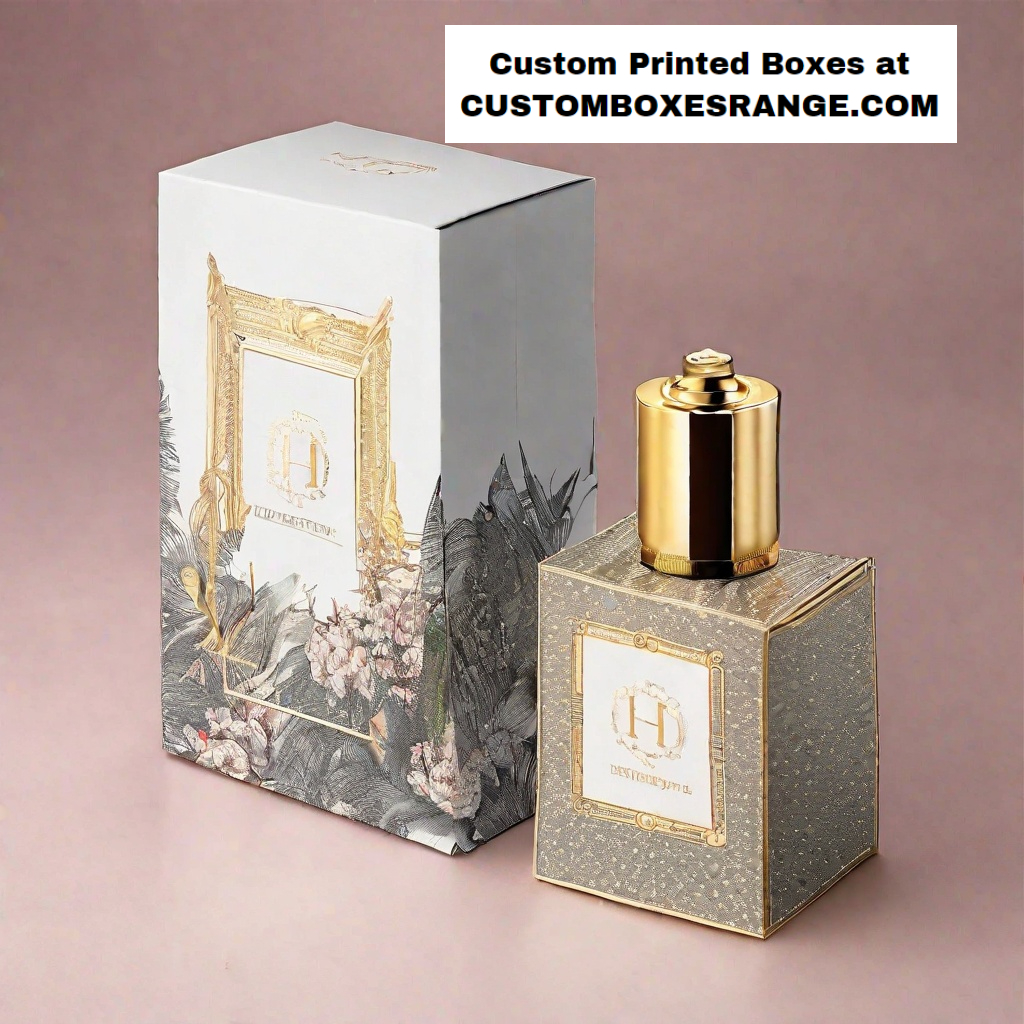Exploring Eco-Friendly Solutions for Personalized Perfume Boxes

Our senses are stimulated by the perfume industry, which takes us on an aromatic voyage through exotic notes and enticing flowers. Nevertheless, the elegance and charm of these perfumes frequently come in packaging made of materials that is not environmentally friendly. This article explores the cutting-edge field of environmentally aware personalized perfume boxes and packaging solutions, where cutting-edge design and sustainable materials converge to reinvent the environmental impact of the sector.
The Problem with Traditional Personalized Perfume Boxes
Traditional perfume packaging, typically comprised of glass bottles, plastic caps, and intricate, non-recyclable boxes, generates a significant environmental burden. The extraction and production of glass, the energy-intensive manufacturing processes, and the transportation of these heavy materials all contribute to a substantial carbon footprint. Moreover, the ornate custom packaging often leads to excessive waste that litters our landfills, making it clear that a change is needed.
Sustainable Materials Use in Personalized Perfume Boxes
In response to the ecological crisis, the perfume industry is turning to sustainable materials that are both eco-friendly and luxurious. Recycled glass is emerging as a popular choice for perfume bottles. This glass variant requires less energy to produce and minimizes the extraction of new resources. Furthermore, the use of biodegradable or recycled plastic caps is on the rise, allowing for a reduction in plastic waste.
Beyond glass and plastic, alternative materials like wood, cork, and metal are gaining attention for their sustainability. Wood-based packaging offers a rustic, organic charm while being renewable and biodegradable. Cork, extracted without harming the tree, is not only a lightweight and biodegradable option but also adds a unique texture to packaging. Metal packaging is not only durable but also infinitely recyclable, ensuring that the materials don’t end up in landfills.
Minimalist Design
In addition to sustainable materials, minimalist design is becoming a key trend in eco-friendly perfume packaging. Designers are simplifying their packaging to reduce waste and environmental impact. Streamlined, elegant designs not only reduce the use of materials but also make a statement about the brand’s commitment to sustainability. This approach often pairs well with sustainable materials, creating a harmonious blend of form and function.
Minimalist packaging is not only eco-conscious but also aligns with the broader consumer demand for simplicity and authenticity. Brands that embrace this trend can attract environmentally conscious consumers while also reducing their carbon footprint.
Refillable Perfume Bottles
One innovative solution to the problem of perfume packaging waste is the concept of refillable perfume bottles. Instead of discarding empty bottles, consumers can return them to be refilled with their favorite fragrance. This approach dramatically reduces the need for new glass bottles and plastic caps, cutting down on production-related emissions.
Brands like Byredo, Le Labo, and Maison Francis Kurkdjian have successfully introduced refillable perfume bottle systems, fostering a sense of sustainability and customer loyalty. The experience of refilling a cherished bottle adds a personal touch and encourages consumers to participate in the brand’s environmental initiatives.
Sustainable Packaging Alternatives
The perfume industry is also exploring alternative packaging solutions that challenge the conventional design of perfume bottles and boxes. Brands are introducing innovative, sustainable materials like algae-based packaging, mushroom mycelium, and even edible packaging. These materials, derived from natural sources, are biodegradable and require fewer resources to produce, pushing the boundaries of eco-friendly packaging.
Algae-based packaging, for instance, is not only biodegradable but also edible, making it a truly sustainable option. Mushroom mycelium, with its ability to take various shapes, offers unique and customizable packaging solutions. These alternatives are opening doors to creative and sustainable packaging that aligns with consumers’ environmental values.
Education and Consumer Awareness
Efforts to embrace eco-friendly perfume packaging solutions must be accompanied by education and consumer awareness. Brands need to communicate their commitment to sustainability and the environmental benefits of their packaging choices. They can engage consumers through storytelling, showcasing the journey of their products from sourcing sustainable materials to the design and manufacturing process.
Furthermore, consumer education about recycling and responsible disposal is essential. Many perfume bottles and packaging components can be recycled, but consumers often lack awareness about proper recycling methods. Brands can play a significant role in educating their customers about how to recycle or return packaging for refilling, helping to close the sustainability loop.
The Role of Regulations and Certifications
Government regulations and industry certifications play a crucial role in shaping the adoption of eco-friendly perfume packaging solutions. Regulations that restrict the use of certain materials or mandate eco-friendly practices can encourage brands to make sustainable choices.
Certifications such as “Cradle to Cradle” provide a standardized framework for assessing the sustainability of packaging materials and design. Brands that obtain these certifications demonstrate their commitment to environmentally responsible practices and can appeal to environmentally conscious consumers.
Perceive Fragrance Packaging
The perfume business has demonstrated its commitment to environmental sustainability by moving toward eco-friendly packaging options. Reusable bottles, minimalist design, sustainable materials, and creative packaging substitutes are revolutionizing how we experience and view scent packaging. To achieve a future where perfume packaging reduces its environmental impact, regulations and consumer education are also essential.
The perfume industry is positioned to set an example for other luxury industries by proving that extravagance and environmental responsibility can coexist peacefully in an era where customers are increasingly demanding sustainable options. The perfume business is working to preserve not just the essence of excellent perfumes but also the beauty of our world for future generations by developing eco-friendly packaging.




